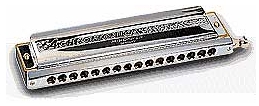There is a suburb in the San Francisco Bay Area that
is a paragon of diversity. According to
the 2010 census, the town is 23.3% White, 10.7% Black, 27.3% Hispanic/Latinx,
34.5% Asian and 6.6% multi-racial. I suspect that it will be even more mixed
when the 2020 census is tallied up. The
name of the town is San Leandro; it is just south of Oakland in the East Bay.
It was once a paragon of racism. I know, because I grew up there during that
phase of San Leandro’s existence.
Historians estimate that the first humans arrived in
the San Leandro area about 5,000 years ago.
It was a hospitable environment, on the eastern shore of the San
Francisco Bay. There were lots of food
sources – the bay was full of seafood and marine mammals; the mild climate was
friendly to edible plants and edible wildlife.
The Ohlone people lived in the East Bay Area – peaceful hunter-gatherers. They were oppressed when the Spanish
colonists arrived and were slaughtered by state government authorities when
California entered the Union in 1850.
This was another chapter in the genocide of Native peoples in North
America. Prior to the arrival of the
Spanish colonizers in the late 18th
Century, there were about 300,000 Native people in California. By 1900, the number had dropped to 16,000.
I grew up in San Leandro from the mid-50’s to the
early ‘70’s. During that timeframe, only
White people lived there (with a smattering of Asians and Hispanics). It was about 99% White. Of course, this wasn’t an accident. The city to the north, Oakland, was about 50%
Black and the city of San Leandro did everything possible to keep the Black
folks out. The city had restrictive
covenants for decades, which made it illegal to sell or rent housing to Black
people. When those restrictions were
declared unconstitutional, the system became informal – red-lining/steering by
realtors, “gentlemen’s agreements,” collusion on the part of the 10 homeowner
associations in the town, etc. There was
one Black person at Pacific High School when I was there from 1969 through
1972. I felt sorry for that girl.
In the Bay Area, San Leandro was well-known for its
in-your-face racism. The Black folks in
Oakland called it “Klan Leandro,” and they were afraid to go there. When a Black family moved to the town in 1980,
someone actually burned a cross on their front lawn. San Leandro was the
Alabama of the liberal Bay Area. Brian Copeland wrote an excellent one-man play and a book about being one of the few
Black kids in San Leandro in the early 1970’s – he arrived as I was leaving.
Not surprisingly, San Leandro attracted a certain type
of resident when I was a kid. Most folks were lower middle class. There were
many transplants from the American South.
One of these folks was my father, a Tennessee native who worked as a payroll clerk at a food warehouse. My dad was a stone-cold bigot. He was quiet about it, but it was part of his
heart and soul. He was raised to see
Black people as inferior and he never let go of that twisted worldview. There were many things I disliked about my
father, but his racism was at the top of the list. He has been dead for almost
30 years, and I understand now that he did the best he could given his
upbringing and mental health issues.
I was a 1960’s hippie kid, a “peace and love”
knucklehead. I didn’t know any Black
people, but I loved their music. I
figured they must be superior people if they could produce jazz and R&B. I
moved to Berkeley to attend college and ultimately ended up in Evanston IL. Evanston
has also struggled with racism but has a history of diversity. Black people
have lived in the town since the early 19th century.
So what’s my point?
I look at San Leandro today and realize that the old system of
oppression has broken down, but aspects of it are alive and well. The police killed a Black man in the town
recently – six weeks before the murder of George Floyd, San Leandro police shot and killed Steven Taylor, a Black man in the middle of a mental health crisis at a Walmart. There is more - San Leandro also had some of the worst looting in the nation during the unrest over the George Floyd murder.
San Leandro has its problems, but
red-lining isn’t one of them anymore.
There is still tons of work to do all over our
country, but remembering some of this local history can be a source of
hope. It is bad now, but it has been
worse. Things can get better. Someday we
might even recognize that we are all human beings and make amends for past
injustices.



No comments:
Post a Comment